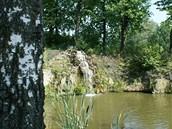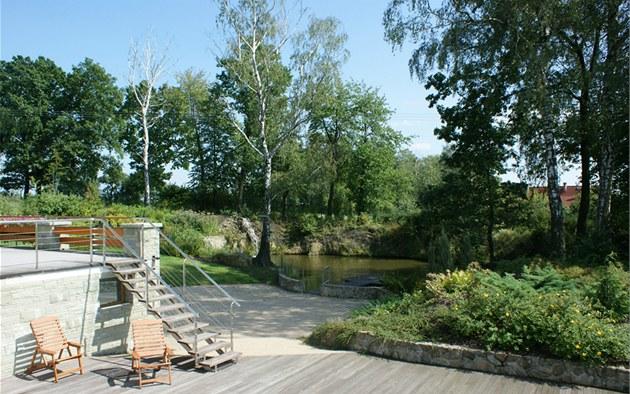
They did not want a flooded quarry, now they enjoy the luxury of a private fish lake
Having a quarry on my own building plot - where I want to build a comfortable new home and build a garden - where the water is maintained even during the greatest drought, is nowadays terno. At the same time, there was not much missing and Danuta and Gustav Kotajní from Koňákov in the Těšín region would have deprived themselves of a similar treasure inherited from their ancestors. Fortunately, they met an architect who opened their eyes.
Land surrounded by nature, it wants natural materials
Photo galleryView photo gallery
|
From the beginning, the couple wanted and want to respect the surrounding nature and the place itself. And they respect the fact that they have a plot of land in a rolling landscape of submontane character at an altitude of 430 meters.
"We guessed from the very beginning that we would succeed here with a wooden house, more precisely with a log cabin, but the massive log was against my mind. As a technician, I prefer clean, uncomplicated shapes," said Gustav Kotajný.
So they visited a number of similar buildings in the area, decided on internet networks and finally, in cooperation with the architect Mark Daniš, decided on the Finnish system, which was just beginning to gain ground in our country. Their house was then only the eighth built in the Czech Republic.
They also agreed that the house should combine only natural stone and wood, and gave the design of an architect who divided the mass of the building into two seemingly separate, yet organically interconnected parts. The result is a kind of semi-detached house that alternates between natural stone and wood. The combination with gray cement tiles on the roof is also sensitively tuned.
Most of the glazed areas, ie windows and doors, the house opens into the interior of the plot, ie towards the flooded quarry with adjoining grassy areas and green plantings around the perimeter. In fact, it literally leans towards this really private green zone, because it seems to be slightly bent in the middle of its length. The mentioned break is optically compensated by a terrace supported by stone pillars.
The owner now keeps fish in the former quarry
Today, the family enjoys a house perched on a ridge of graceful terrain waves, which has a basement open towards the terrace adjacent to the shore of the former quarry. Thanks to the architect, the idea of letting him take him is long gone. On the contrary, the stony crater was sensitively incorporated into the concept of the near and distant surroundings of the house and is even newly supplemented by a waterfall on the opposite side.
Its history is related to the fate of the family, because during the time of the grandfather of today's owner, material was mined in it, which strengthened the roads in nearby Těšín. The quarry was then a source of important, albeit modest, income. Subsequently, the pit was flooded by groundwater and the resulting lake now reaches a depth of two meters.
"On top of that, its level hardly fluctuates and even in times of the greatest drought, it drops by only 40 centimeters," the owner said. "So I landed carp, grass carp and a few pike in it. We have a swimming pool on the terrace behind the house."
A modest garden built in harmony with nature
The hosts also agreed with the architect on the appearance of the surroundings of their house. "Again, we wanted the garden to follow the nature behind the fence," they say. This is one of the reasons why there are no significantly decorative woody plants to see in the plantings situated mainly around the perimeter of the plot.
The skeleton of greenery consists of the original trees and in the undergrowth alternate rather inconspicuous shrubs, which do not disturb even at the time of full flowering. The only exception in this natural concept is the sakura tree line, ie ornamental cherries, which leads the steps of visitors from the entrance gate almost to the house. And it is true that it is with them that the locals regret that in this somewhat harsh environment they can only fully bloom for two weeks.
You will find this and other inspiring gardens in the current issue of the monthly Knihovna Knihovnanička Zahrada.









